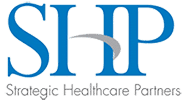A Summary of Best Practices for Provider Enrollment
Provider enrollment is what we often refer to as the offensive lineman of healthcare. No one knows or appreciates the function until there’s an issue. And in this case, a revenue stream issue. Basically, PE is a critical revenue cycle process that must exist in most healthcare settings, that verifies a healthcare professional is authorized to deliver appropriate service. And as a result, receive reimbursement from carriers, including Medicare, and Medicaid. In a proactive manner, igniting an efficient process is essential for maintaining proper healthcare delivery and preventing the providing from any disruption in care. Below are some PE best practices that healthcare organizations can use to assess or implement to hopefully improve their respective process.
Provide Enrollment Requirements
First and foremost, you must understand the requirements for each payer. The first step in successful provider enrollment is understanding the specific requirements of each payer (e.g., Medicare, Medicaid, private insurance). Each of which will have distinct documentation, deadlines, and qualifications that providers must meet before being approved. Administrators and enrollment specialists should stay up to date with any changes in enrollment guidelines, including credentialing, licensure, and insurance network requirements. Submitting accurate applications in a timely manner for each payer can significantly reduce the risk of missing out on payments for services provided.
Technology and Automation
Second, utilize technology and automation where able. Effective platforms can play a significant role in simplifying, streamlining, and accelerating the provider enrollment process. Many healthcare organizations now use automated systems to track and manage applications. SHP being one of those. By using such applications, administrators can submit applications, track their status, and send reminders for upcoming milestones. Such platforms also reduce human error by automatically filling out forms with the correct provider information and ensuring all required fields are completed. And as previously stated, submitting accurate applications is absolutely vital.
Proactive Communication
Third, you must prioritize timeliness, communication, and being proactive. A key best practice for provider enrollment is ensuring that applications are submitted as early as possible. Many insurers have lengthy processing times, especially for new providers or changes in practice locations, which can delay payments or lead to gaps in providing necessary services. By submitting applications well in advance of expected start dates, providers can avoid any disruptions in billing or patient care. And again, proactive communication with payers about the status of applications can help address potential issues before they lead to delays. Follow-up calls or emails should be part of the process and routine to ensure timely processing and resolution of any problems that may arise.
Maintain Documentation
Fourth, maintaining comprehensive documentation is essential throughout the PE process. Providers should ensure that all supporting documents, such as licenses, certifications, and malpractice insurance, are current and valid before submitting enrollment applications. Having a checklist of required documents for each payer can help prevent missing items. It’s important to keep detailed records of all correspondence, application submissions, and approvals for auditing purposes. This documentation will serve as a reference in case there are questions or disputes regarding a provider’s status with insurance companies.
Lastly, keep in place a sufficient training program for staff and ensure compliance. Training staff involved in provider enrollment is vital for maintaining accuracy and compliance. Regular training ensures that staff members are well-versed in the latest regulatory changes, payer policies, and the use of any technology or software involved in the process. It’s also important to foster an understanding of healthcare compliance requirements, such as anti-fraud regulations, to avoid legal complications.
Effective Provider Enrollment
Effective provider enrollment is crucial for ensuring that healthcare providers are able to deliver services without interruptions and receive timely reimbursement. By adhering to best practices such as understanding payer requirements, centralizing the enrollment process, leveraging technology, maintaining thorough documentation, and prioritizing proactive communication, healthcare organizations can streamline enrollment, reduce errors, and enhance overall efficiency. Continuous monitoring, staff training, and staying up to date with regulatory changes will also help ensure long-term success in managing provider enrollment.
If you’re unsure where to start, have staff turnover, or simply need to improve your PE process, give SHP a call. We handle the initial enrollment for both physicians and mid-level providers, but we also provide ongoing enrollment maintenance, so you no longer have to worry about deadlines, requirements, or finding the right forms. A cradle to grave approach with provider credentialing services.
